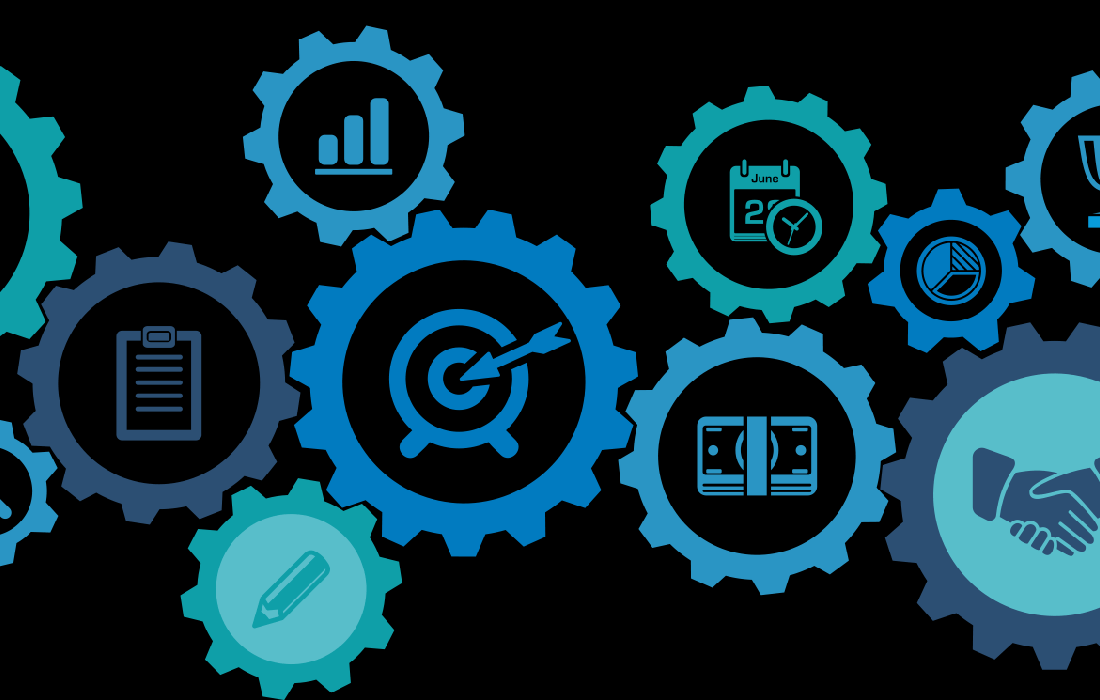Why does the keyboard look the way it does, can you find logic in this? The same layout is also used on phones, while this is a different way of typing. Why is this the way it is and could this not be more efficient? The reason is a lock-in. Is there any way to open this lock-in?
QWERTY
The keyboard we use today was created by choices made in the nineteenth century. Why these choices were made is not entirely clear; there are several theories for this. The most likely theory has to do with the typewriter. Because of the layout of the keyboard, the hammers, which were supposed to strike the letters on the paper, would not become entangled with each other. Another theory states that telegraphers could convert spill codes faster with today’s qwerty keyboard [1][2].
The qwerty keyboard was used by the major typewriter manufacturer Remington. This company merged with other manufacturers, after which the qwerty layout became the standard. The manufacturer also offered typing courses so typists became accustomed to the qwerty keyboard. As a result, the qwerty keyboard became the norm and it became unattractive to use a different keyboard layout [2].
Although hammers no longer need to be considered, we still use the same keyboard. Keyboards can be arranged much more efficiently by placing commonly used letters on the home row. This is the middle row on the keyboard where the fingers are at rest. What the most efficient keyboard should look like is person-dependent on which letters are often used and what that person’s preferences are. The dvorak keyboard, for example, could be more than 10% faster [3]. The qwerty keyboard is now used mostly because it has become “normal” [2].
Technology lock-in
The keyboard is a classic example of technology lock-in. Past choices keep people stuck in certain, perhaps outdated, patterns of thinking. The idea of a technology lock-in is that techniques or technologies follow a path that is complicated or expensive to deviate from. As a result, they will exist for a long time, even when there are better alternatives [4].
There are two possible technical explanations for why technologies are subject to a lock-in effect: The first explanation states that stakeholders hold certain rules of thought that limit the thought process. An example of this is that people think in terms of improving old solutions rather than finding new ways to solve a problem. As John McNeece said “If Henry Ford had asked whether or not he should make an automobile, people would probably have said they wanted a faster horse” [5]. A second explanation lies in the acceptance of technologies. It is more attractive to use a technology that is already accepted by many agencies or individuals [4].
There are also economic explanations for technology lock-in:
- Economies of scale created when one technology becomes the standard.
- Learning effects whereby performance improves as people learn from each other and their own experience.
- Changing expectations where people become more confident in the performance of a technology as it becomes more accepted.
- The network benefits that come from using the same technology, such as an infrastructure that everyone uses.
These principles create barriers for new, and perhaps better, technologies to replace the old technology [4][6].
Institutional lock-in
A second type of lock-in that exists is that of agencies. The larger an organization is and the longer it exists the more difficult it becomes to break through social barriers. North argues that the same barriers may apply to this as to a technology lock-in [7].
Pierson gives the following barriers, for political institutions in particular [8]:
- Choices and activities are succeeded by new choices and activities, these become collective actions
- The number of departments/branches/agencies makes it complicated to implement change in the same way everywhere.
- Distribution of power allows those with power and prestige to break barriers faster than others.
- Complexity of purpose and connections between actions makes it difficult to make up for mistakes.
Another type of lock-in within an organization is vendor lock-in. A company or consumer is dependent on a particular vendor. This may be because it is the only supplier (nearby) or because of high switching costs [9].
Because technical systems are entangled in organizational structures, the aforementioned factors of an institutional lock-in can reinforce the factors for a technology lock-in [6].
Carbon lock-in
In addition to technology and institutional lock-in, Unruh argues that the industry is stuck using fossil fuels and that there is a carbon lock-in [10]. Since the industrial revolution, most energy has been derived from fossil fuels. There are alternative sources and so it is technologically quite possible to stop using fossil fuels. It just costs an awful lot of money to switch completely to renewable energy.
Summary
In short, lock-in is sticking to certain thought patterns, actions or habits because this is what was chosen in the past. It is a self-reinforcing process; once one has taken a path, it is almost impossible to deviate from it. The longer one follows this path the more difficult it becomes. Because of lock-in, new and better ideas may never gain a foothold simply because one is used to something else.
The next time you look at your keyboard, remember that this actually could have been done much more efficiently. In fact, you didn’t choose to use this keyboard; that choice was made for you about 150 years ago.
[1] Noyes, J. (1983). The QWERTY keyboard: A review. International Journal of Man-Machine Studies, 18 (3), 265-281.
[2] NRC. (2017, December 6). Je toetsenbord verklaart waarom we nog fossiele brandstoffen gebruiken. Retrieved December 25, 2017, from NRC: https://www.nrc.nl/nieuws/2017/12/06/je-toetsenbord-verklaart-waarom-we-nog-fossiele-brandstoffen-gebruiken-a1583777
[3] Torres, R. (2013). QWERTY vs. Dvorak Efficiency: A Computational Approach.
[4] Perkins, R. (2003). Technological “lock-in”. Internet Encyclopaedia of Ecological Economics.
[5] Quote Investigator. (2011, Juli). My Customers Would Have Asked For a Faster Horse.
Opgeroepen op Januari 16, 2018, van Quote Investigator: https://quoteinvestigator.com/2011/07/28/ford-faster-horse/
[6] Foxon, T. J. (2002). Technological and institutional ‘lock-in’as a barrier to sustainable innovation. mperial College Centre for Energy Policy and Technology (ICCEPT).
[7] North, D. C. (1990). Institutions, Institutional Change and Economic Performance. Cambridge University Press.
[8] Pierson, P. (2000). Increasing returns, path dependence, and the study of politics. American Political Science Review, 92 (2), 251-267.
[9] Kratzke, N. (2014). Lightweight virtualization cluster how to overcome cloud vendor lock-in. Journal of Computer and Communications, 2 (12), 1-7.
[10] Unruh, G. C. (2002). Escaping carbon lock in. Energy Policy, 30, 317-325.



